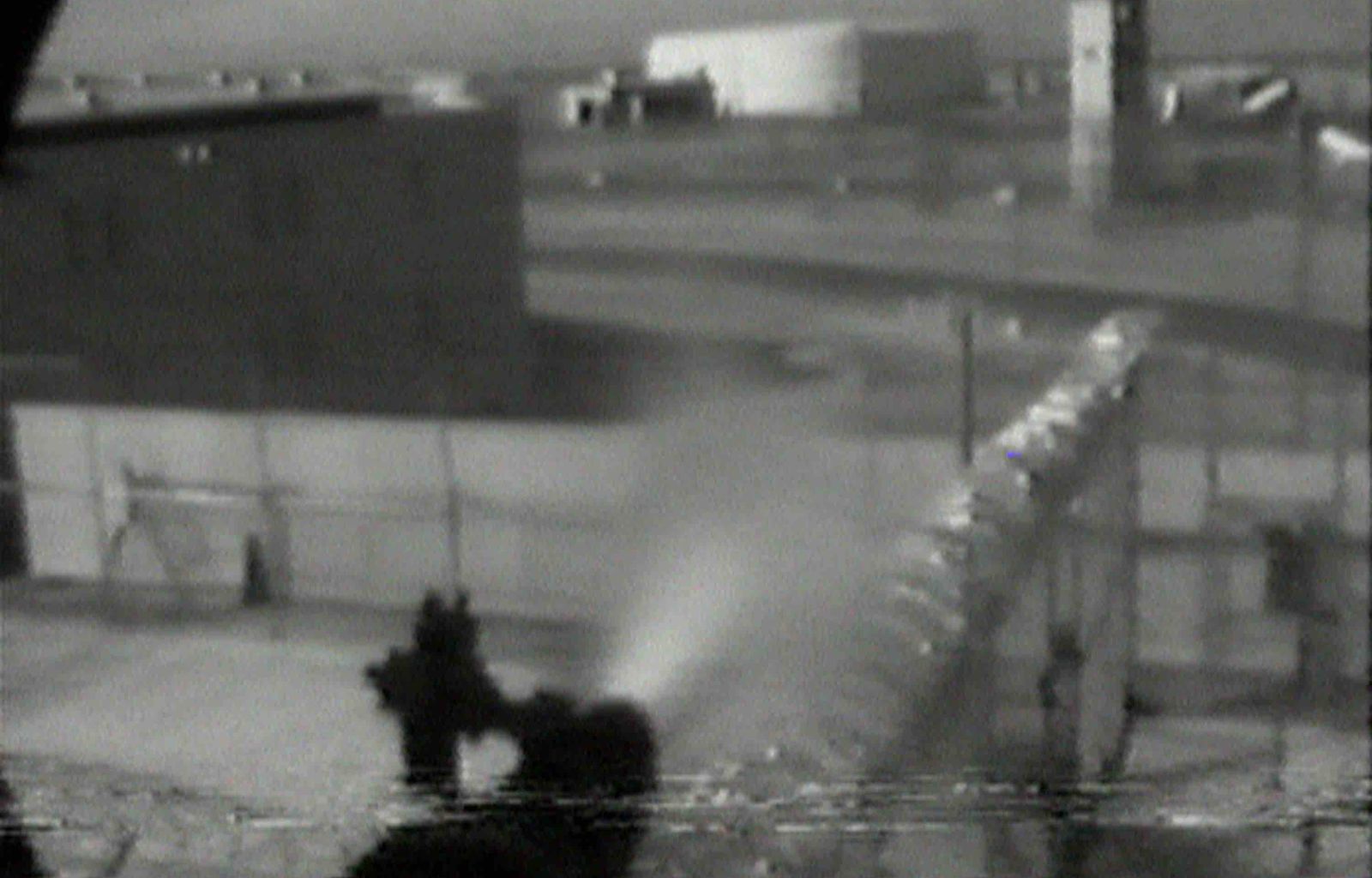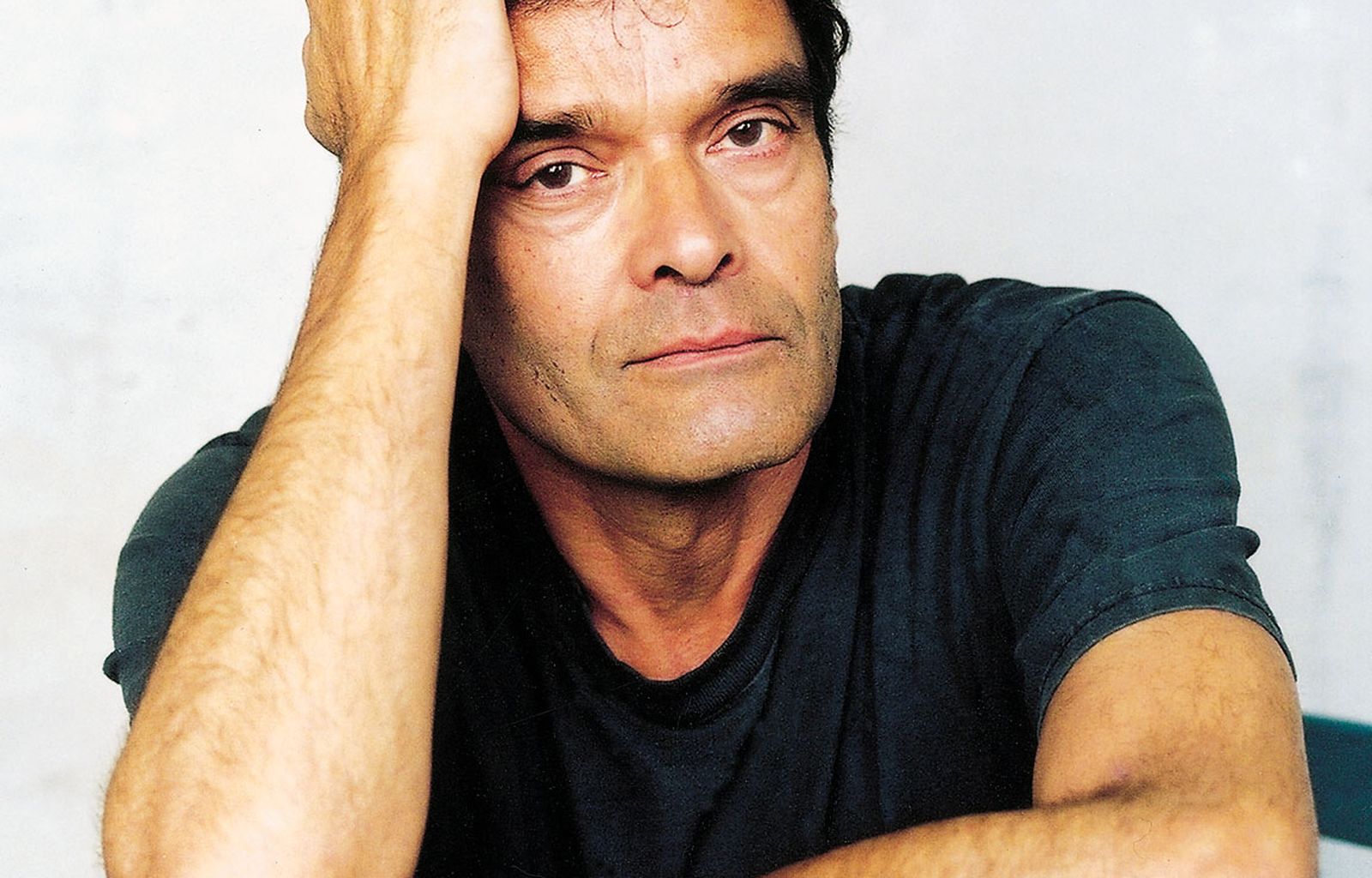“Images from the maximum-security prison in Corcoran, California. The surveillance camera shows a pie-shaped segment. […] A convict attacks another, upon which those uninvolved lay themselves flat on the ground. […] They know what comes now: the guard will call out a warning and then fire rubber bullets. If the convicts do not stop fighting now, the guard will shoot for real. The pictures are silent, the trail of gun smoke drifts across the picture. The camera and the gun are right next to each other. The field of vision and the gun viewfinder fall together.” [cg]
Biography
film director

Harun Farocki
Harun Farocki (Nový Jicin, Germany, 1944 - Berlin, 2014), starting in 1967, made over one hundred and twenty films and installations which analyze the power of images in all their forms and expressions. After studying at Berlin’s Deutsche Film und Fernsehakademie in the climate of political agitation sweeping Germany during the late ‘60s, he began to make agitprop movies in black and white and in 16mm, often combining activism and performance, as is the case with Inextinguishable Fire (1969). Aware of the specificity of his means of communication, Farocki focused his work on a critical analysis of images and the contrasts they create with history, power and the dominant performance system. First with 16mm film, then with video, and finally with digital and digital animation techniques, Farocki developed the video-essay form about the visual arts. From his work during the 1980s and ‘90s, such as Before Your Eyes Vietnam (1982), An Image (1983), Images of World and Inscription of War (1988), and Still life (1997), to his installations of the 2000s (Counter Music, 2004; the series Serious Games, 2010, and Parellel, 2012-2014, which he created and curated with his life partner Antje Ehmann), his works trace and criticize the evolution in the language of images, in between stints at the editing table, photographic collages, security camera shots, aerial photos from WWII, advertising, fragments of films from the past, thermographic cameras, television clips, videogames, digital sequences, computer reconstructions of real landscapes… As a critic for the magazine “Filmkritik,” in his publications and during his seminars, Farocki studied the history of cinema and of German society, analyzing the evolution of the concept of work (for example, in How to Live in the Federal Republic of FRG, 1990) and measuring himself against filmmakers such as Jean-Marie Straub and Danièle Huillet, or Jean-Luc Godard, to whom, in 1998, he dedicated the book Speaking with Godard, which he wrote with Kaja Silvermann.
FILMOGRAFIA
Jeder ein Berliner Kindl (1966), White Christmas (1968), Die Rote Fahne (1968), Nixon kommt nach Berlin (1969), Nicht löschbares Feuer (1969), Sache, die sich versteht, Eine (1971), Zwischen zwei Kriegen (1978), Jean-Marie Straub und Danièle Huillet bei der Arbeit an einem Film (1983), Peter Lorre - Das doppelte Gesicht (1984), Image und Umsatz oder: Wie kann man einen Schuh darstellen? (1989), Videogramme einer Revolution (1992), Schnittstelle (1995), Arbeiter verlassen die Fabrik (1995), Bewerbungen (TV, 1996), Der Auftritt (1996), Stilleben (1997), Worte und Spiele (1998), Gefängnisbilder (2000), Die Schöpfer der Einkaufswelten (TV, 2001), Erkennen und verfolgen (2003), Formation (2005), On Construction of Griffith’s Film (2006), Digital Sam in Sam Saek 2007: Memories (ep. Respite, cm, 2007).
Cast
& Credits
Harun Farocki
fotografia/cinematography
Cathy Lee Crane
montaggio/film editing
Max Reimann
suono/sound
Luis Van Rook
produzione/production
Harun Farocki Filmproduktion, Generali Foundation, Zdf/3sat, Mainz Inge Classen, Movimento, Christian Baute



